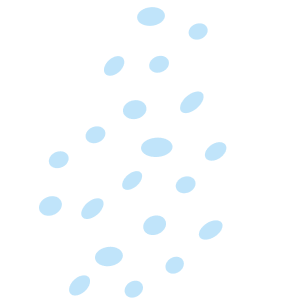Recognizing and understanding ADHD – the impact of ADHD, and the power of ADHD – is a tangled process. We can define what ADHD is, talk about its neurobiology, and outline the symptoms. We can look at percentages, and common differences between boys and girls with ADHD. But how do we understand how our own expectations of ADHD impact our ability to see it? How do we anticipate the deep impact those expectations have on our children and how they see themselves? The neurodevelopmental border of ADHD is just a starting point.
Boys are diagnosed with ADHD about four times as often as girls (Mowlem et al., 2019), but this isn’t necessarily because boys are more likely to have ADHD. Boys’ and girls’ ADHD symptoms often look different, which means they are noticed and interpreted in different ways. In addition to this, and maybe because of this, boys and girls with ADHD might also experience different emotions in relation to their ADHD-related difficulties. For girls with undiagnosed ADHD, struggling with unexplained and untreated symptoms could mean anxiety and depression down the line.
Seeing ADHD
ADHD gets attention when it comes to classroom norms and academic expectations. In school settings, whether or not you can focus on an assignment, sit still at a desk, organize tasks, and remember your homework, matters. Not talking out of turn, listening to the teacher, and paying attention to rules and boundaries, matters. Hyperactivity and impulsivity don’t fit perfectly into the school social structure, and can often be seen as “disruptive” and “problematic.” For better or worse, other people’s emotional reactions to the “disruptive” and “problematic” side of ADHD impacts whether or not it’s recognized.
School is a great place for ADHD to get noticed, to begin the diagnosis process, and to begin implementing treatment and support. If we expect to look for hyperactivity and impulsivity, and recognize those things for what they are, we can not only support children’s academic and behavioral needs, but their emotional needs as well. We can help children to see their strengths, and alter our own emotional reactions to the areas in which they need support. We can make sure to consider their self-image and self-esteem so they don’t grow up feeling as if they’re supposed to be able to fit into a box that’s not built for them.
Except, what if by noticing hyperactivity and impulsivity, we’re actually ignoring inattentiveness? What if our social constructs and expectations for ADHD mean that we diagnose boys but not girls? What does that mean for girls’ self-esteem?
Not seeing ADHD
While many symptoms of ADHD are supposedly the same between boys and girls, many symptoms are not. Studies show that girls with ADHD seem to have lower levels of hyperactivity, lower rates of externalizing behaviors (Gaub & Carlson, 1997), and are more likely to present with inattentive symptoms (Mowlem et al., 2019). As outlined in the pattern above, if the behavioral symptoms of ADHD go unobserved and unnoticed, and ADHD is never recognized for what it is, it won’t be diagnosed. It means that, because girls’ ADHD symptoms might be less likely to also impact others, they get passed over. For girls, that could mean quietly struggling in school, missing out on social cues, and slowly falling behind and away from their peers. As girls with undiagnosed ADHD begin to feel the gap between themselves and their peers, there’s an emotional implication. They internalize, wonder why things feel so badly or so difficult, and begin to believe it’s their fault or that something is wrong with them.
Girls with ADHD tend to rate higher on internalizing symptoms like low self-esteem, depression and anxiety than boys with ADHD (Rucklidge, 2008). Their experience with their ADHD-related difficulties, whether those be academic or social, impact their mental health and self-esteem. Rather than being helped to see that their difficulties and differences have a specific reason behind them, they’re left without explanation, without treatment and support, and without understanding and acceptance.
Opening our minds to all the options
Picking apart the social and emotional layers of ADHD (or any diagnosis, emotional state, or behavior) is complicated. Taking a step back and supporting our children’s growth with an open mind is important. First, pay attention to their emotions alongside their behaviors – they’re always connected. Second, be aware of our expectations, and society’s expectations, for our children’s behavior. How do we expect our sons and daughters to act in school and social settings? How might those expectations impact them? Third, pay attention to our own emotional reactions to our children’s behaviors. Those reactions, or lack of reactions, mean something, and can have a huge impact on whether or not we recognize what our children are dealing with.
If you are worried about your child’s emotional state, behaviors, development, or just have questions, talking with a pediatrician is a good place to start.
References
Gaub, BA, M., & Carlson, PhD, C. (1997). Gender Differences in ADHD: A Meta-Analysis and Critical Review (Vol. 36). Journal of the American Academy of Child & Adolescent Psychiatry. https://www.sciencedirect.com/science/article/abs/pii/S0890856709626125
Mowlem, F., Agnew-Blais, J., & Asherson, P. (2019). Do different factors influence whether girls versus boys meet ADHD diagnostic criteria? Sex differences among children with high ADHD symptoms. Psychiatry Research, 272, 765-773. Science Direct. https://doi.org/10.1016/j.psychres.2018.12.128Rucklidge, J. (2008). Gender differences in ADHD: implications for psychosocial treatments. Expert Review of Neurotherapeutics, 8(4), 643-655. https://www.tandfonline.com/action/showCitFormats?doi=10.1586%2F14737175.8.4.643
Rucklidge JJ. Gender differences in ADHD: implications for psychosocial treatments. Expert Rev Neurother. 2008 Apr;8(4):643-55. doi: 10.1586/14737175.8.4.643. PMID: 18416665.















